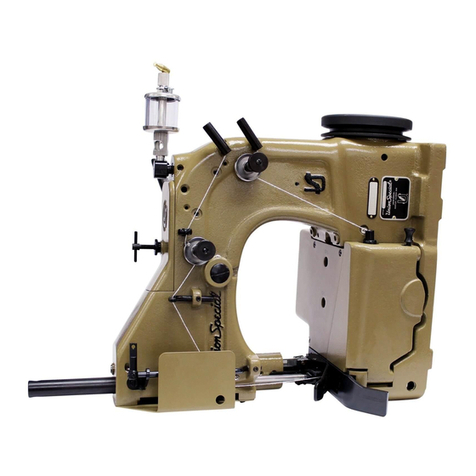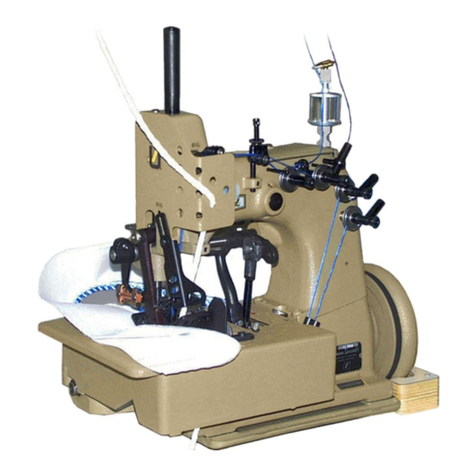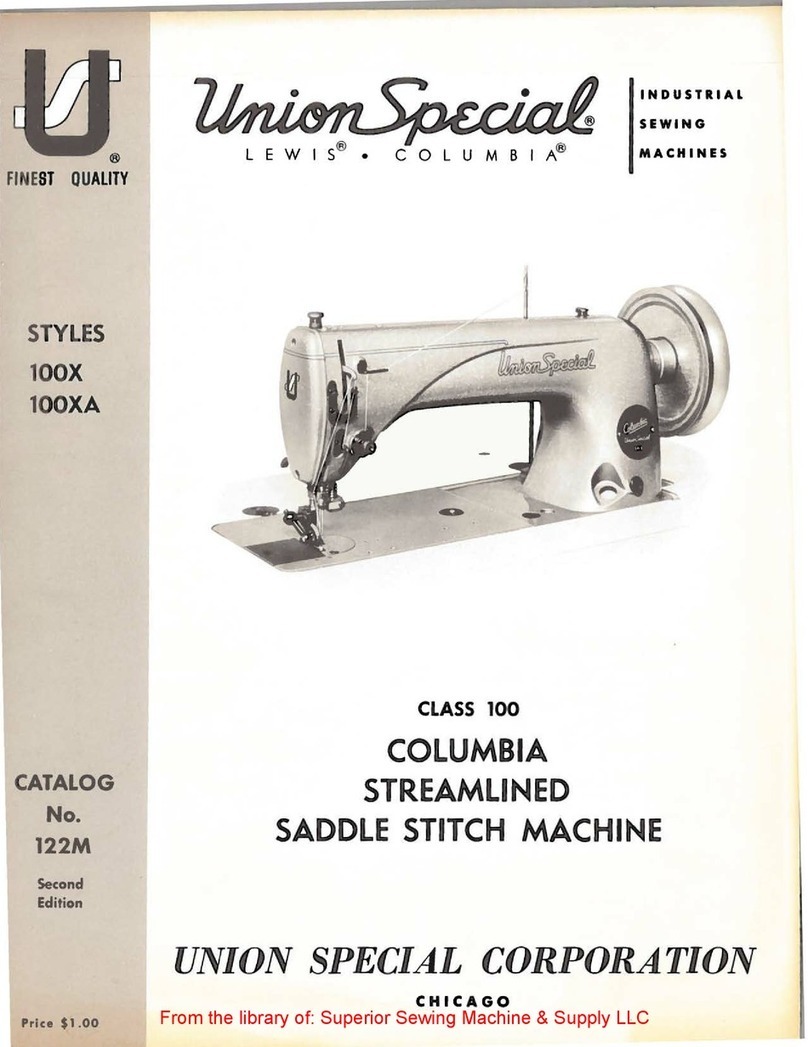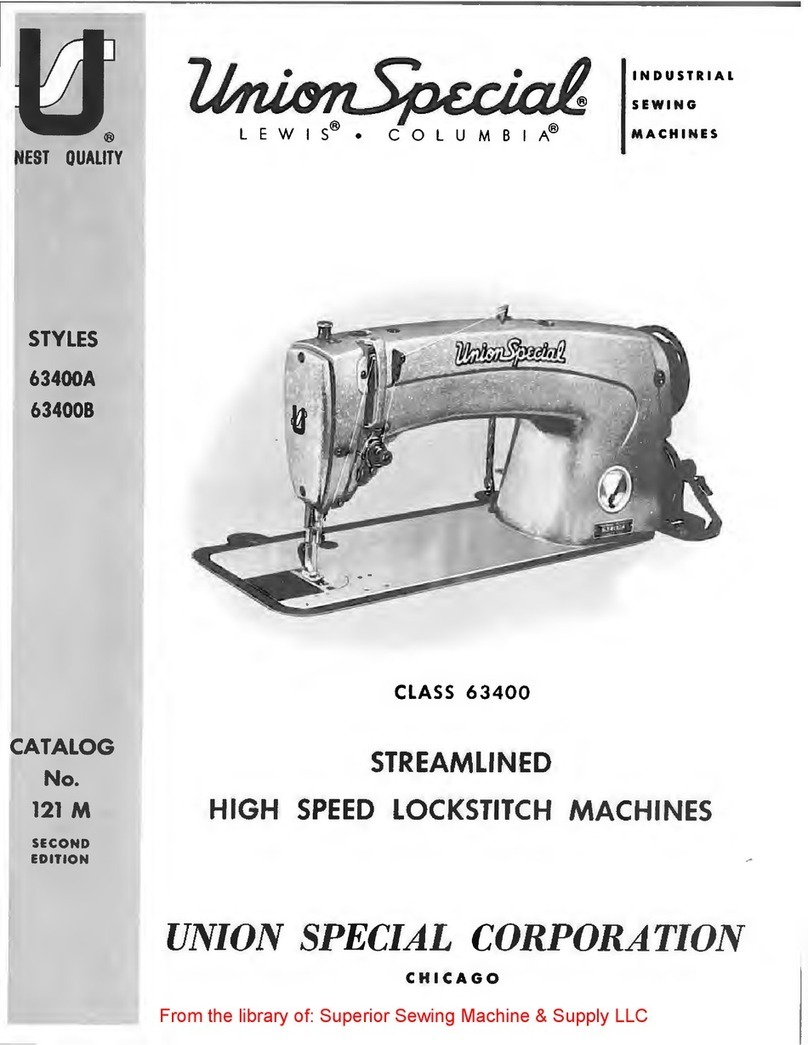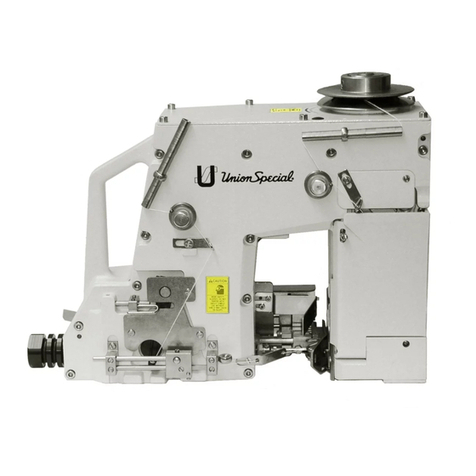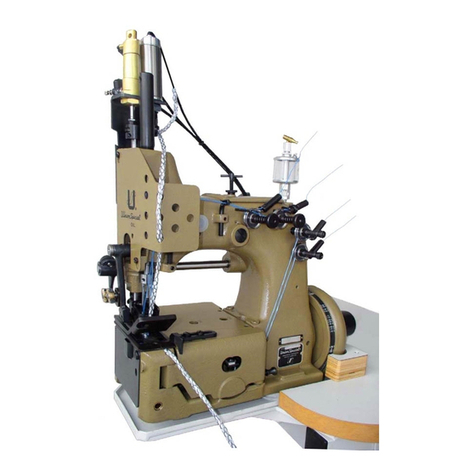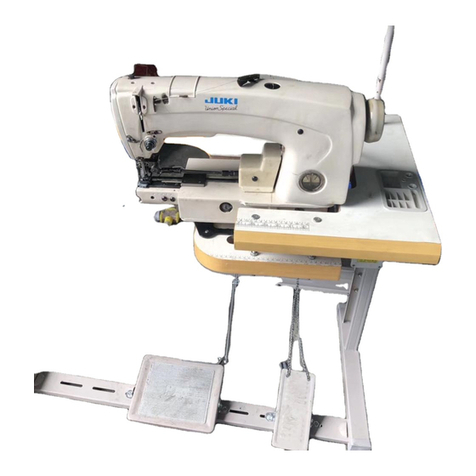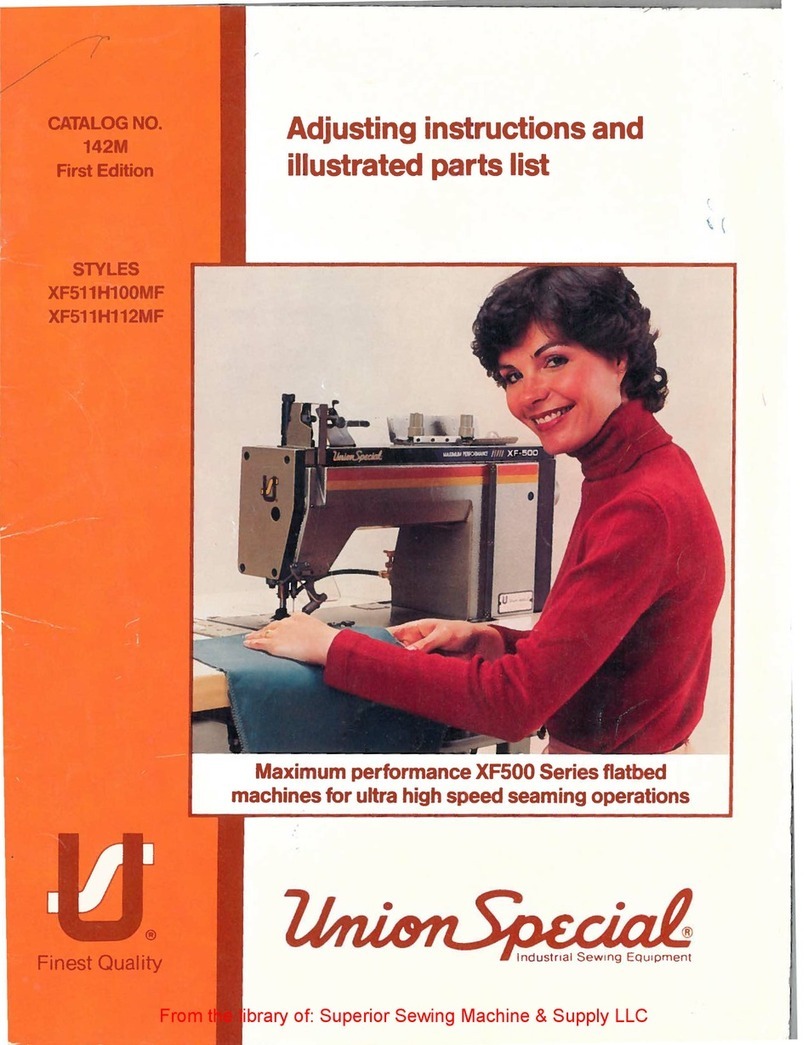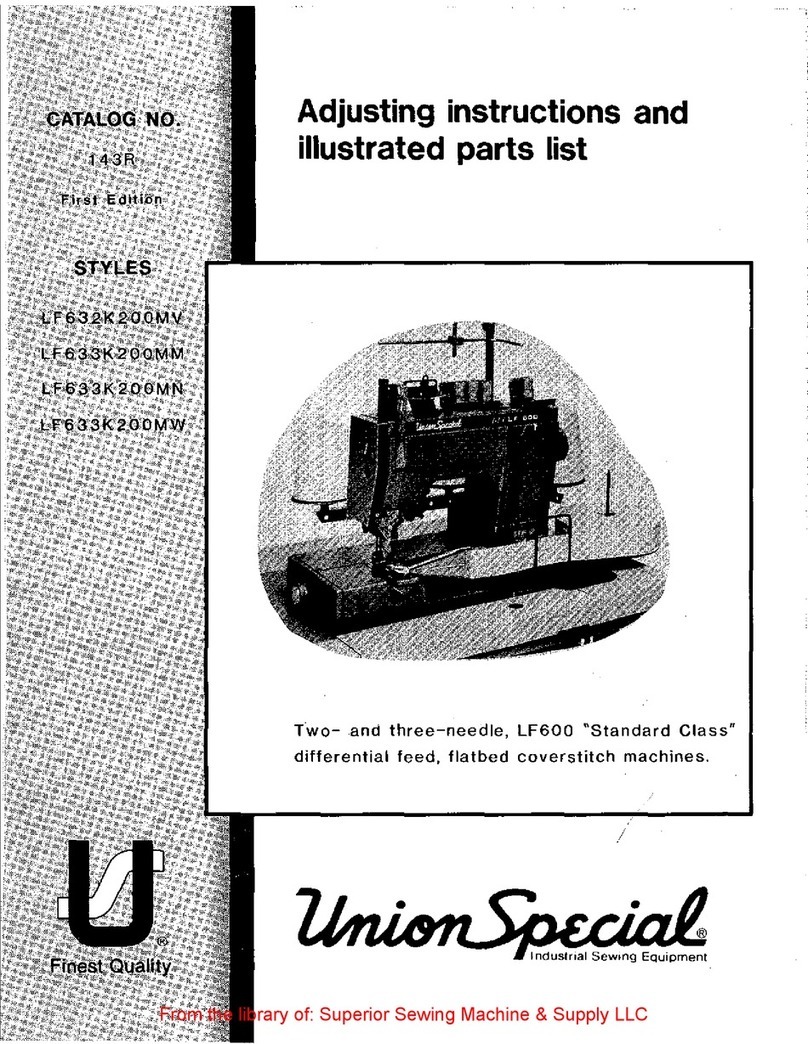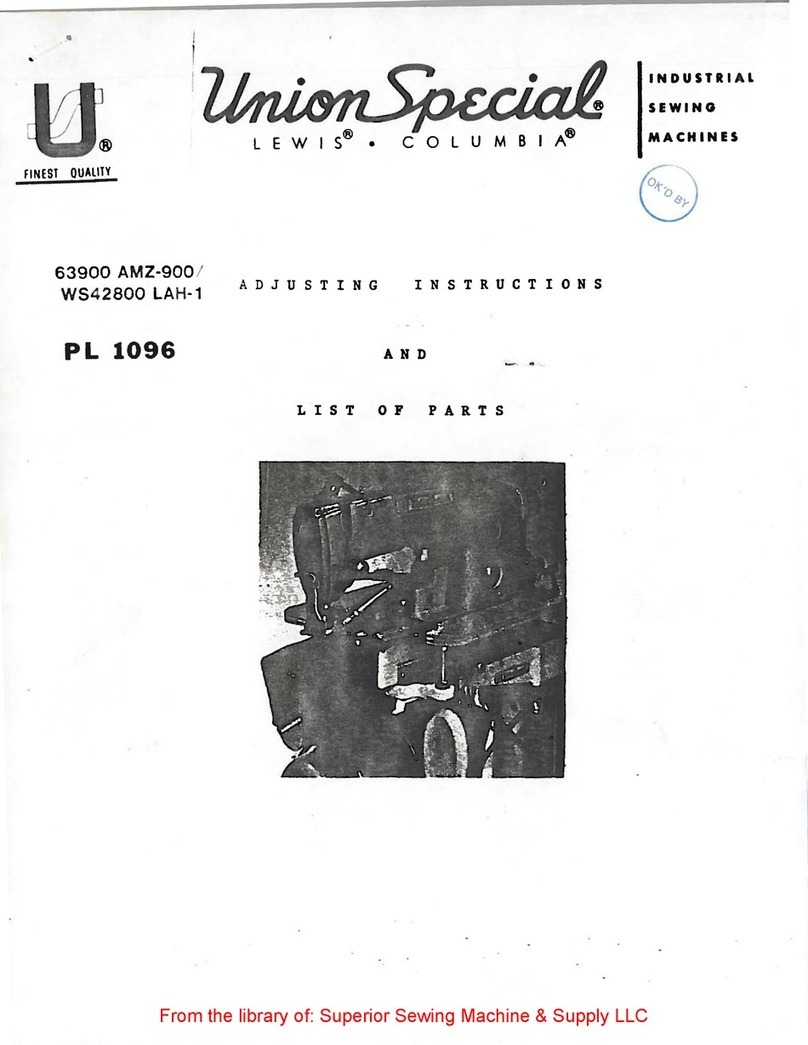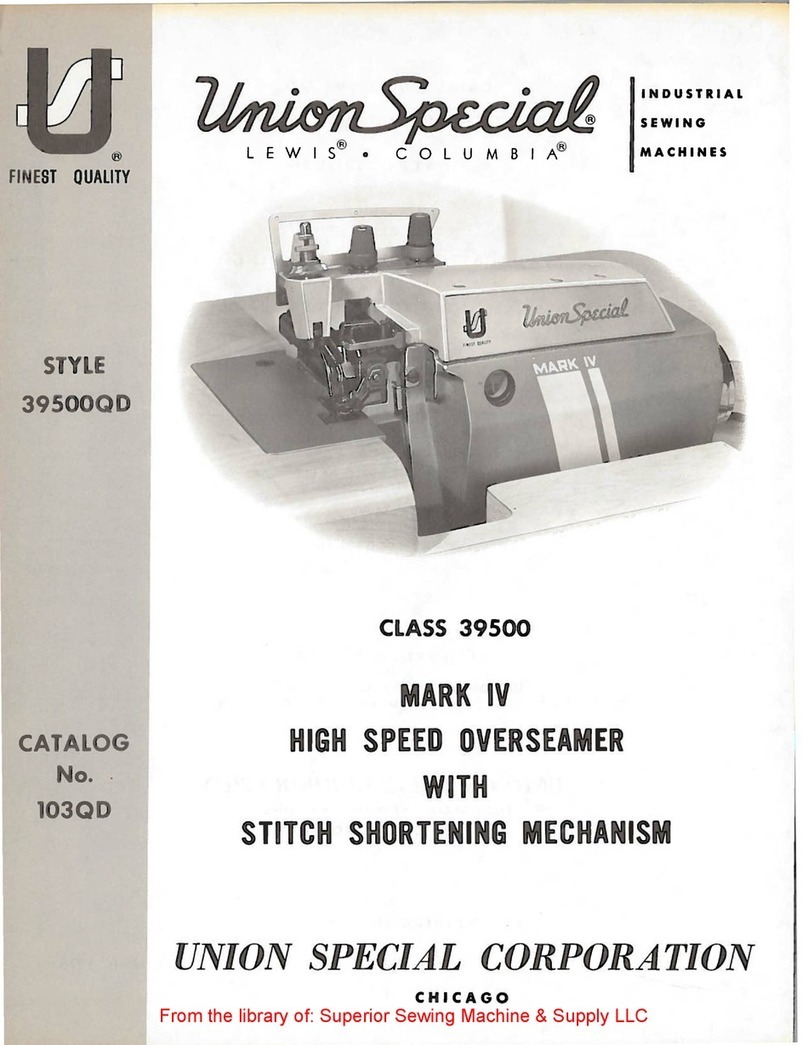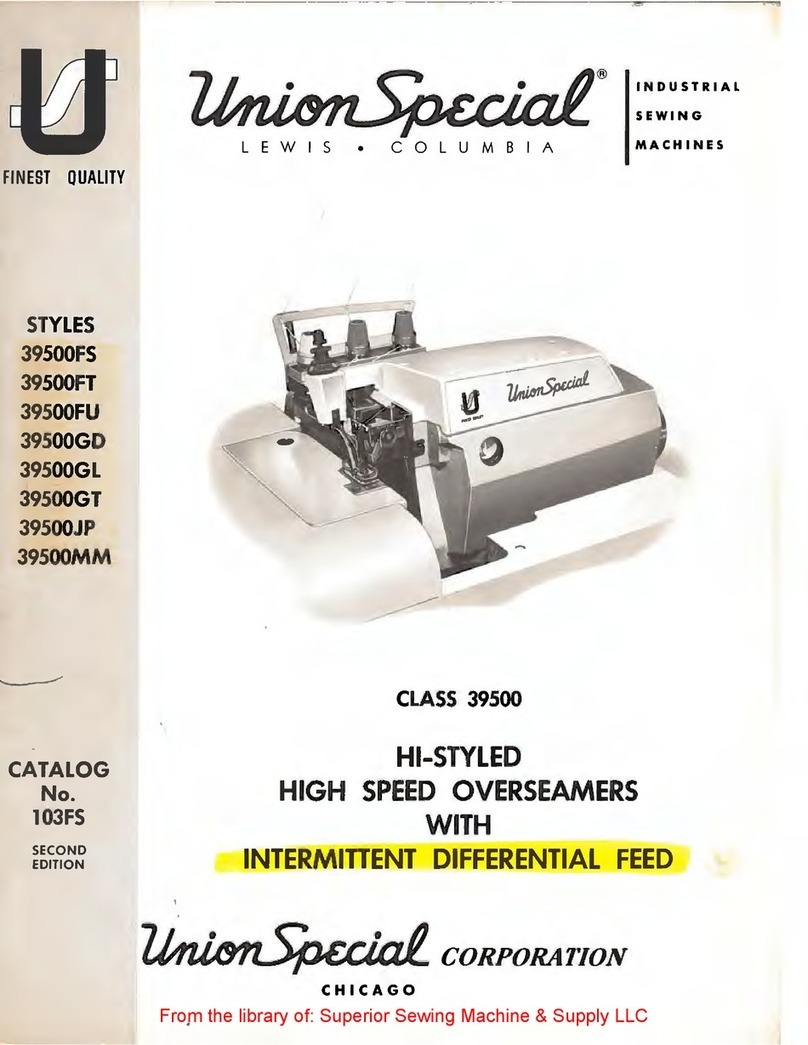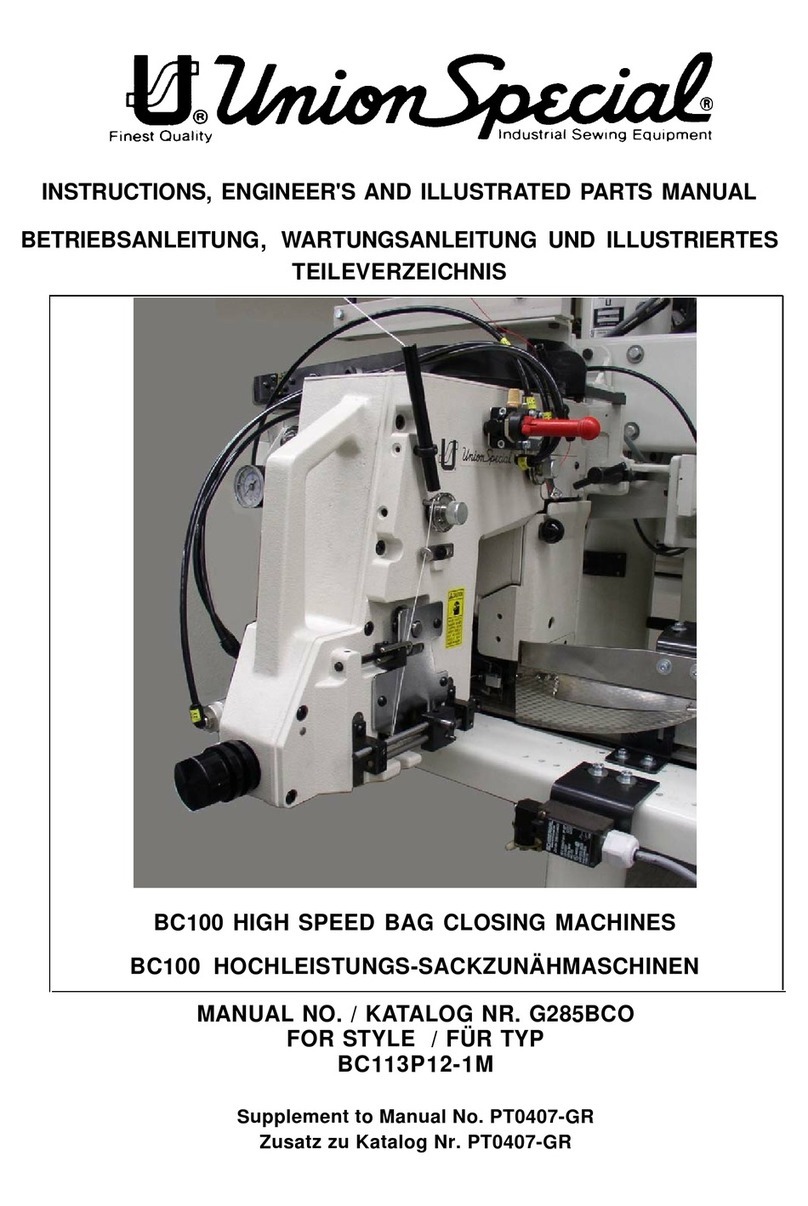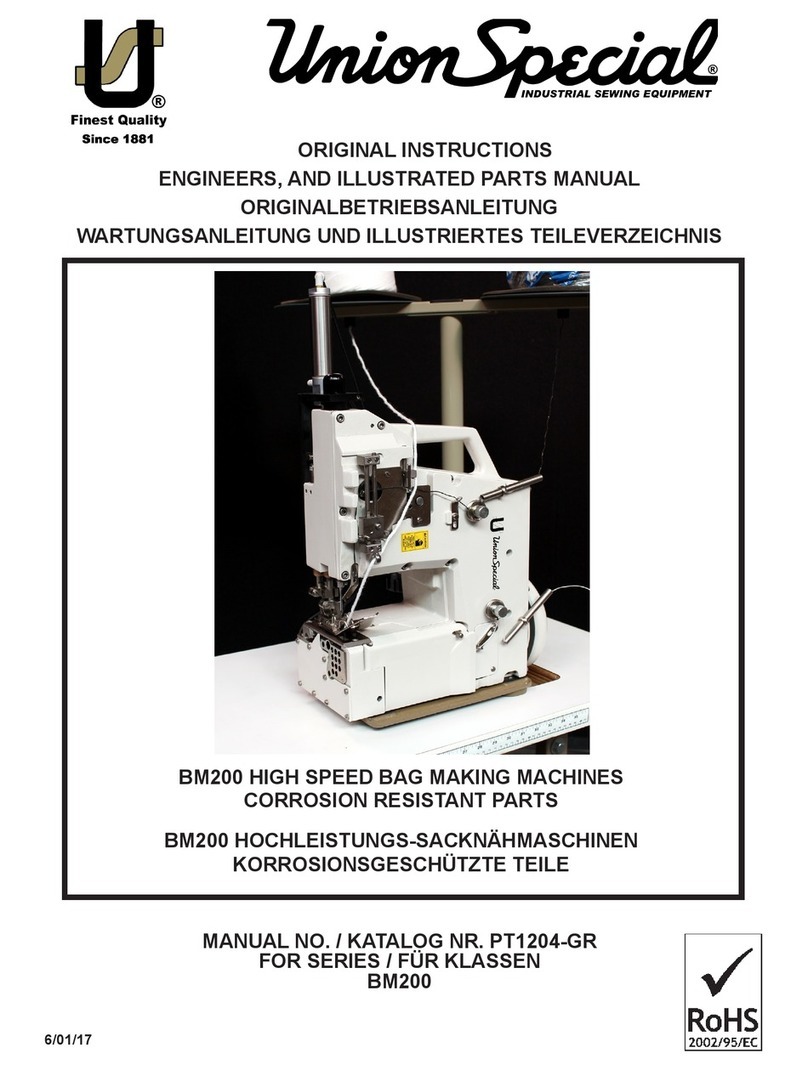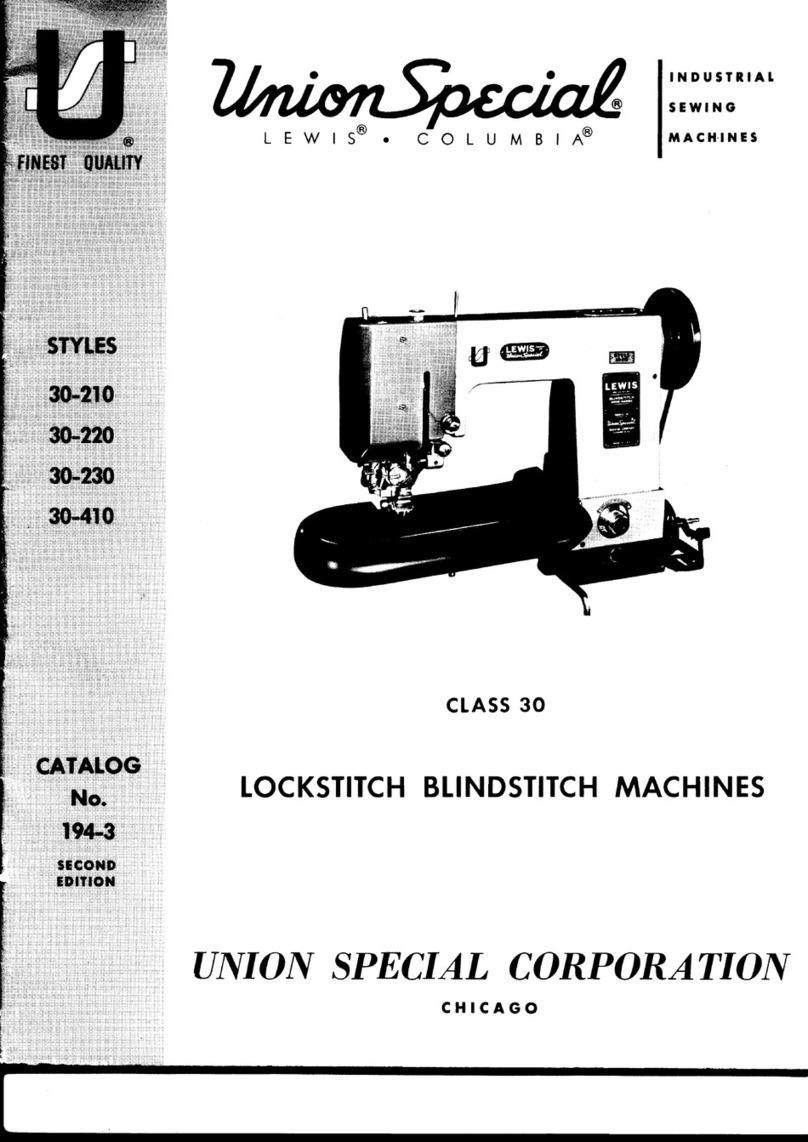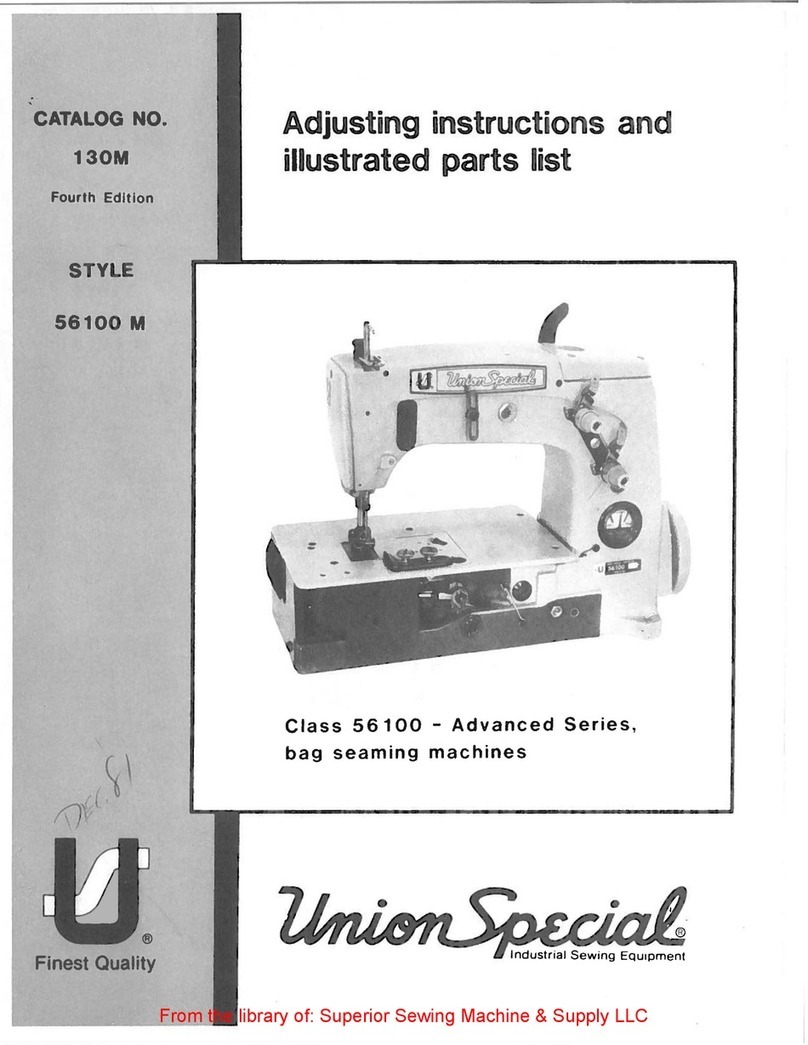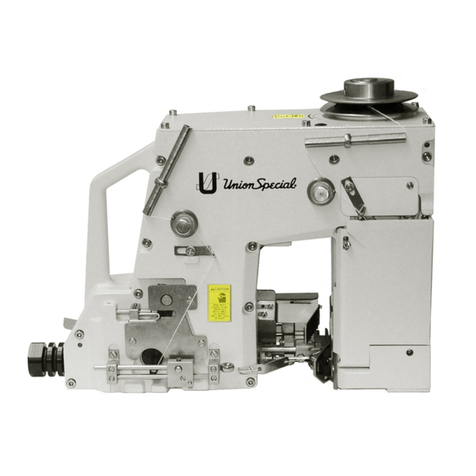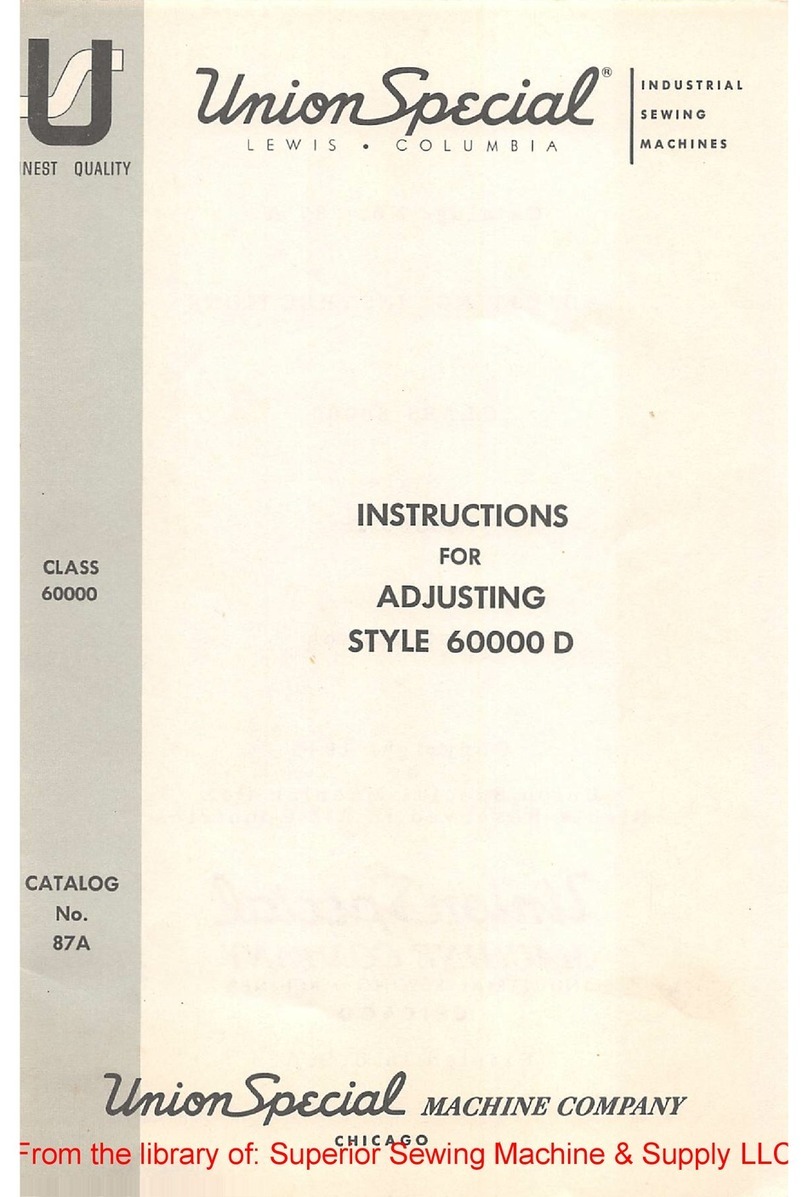
ILLUSTRATIONS
(Continued)
Component
parts
of
sub-assemblies
which
can
be
furnished
for
repairs
ar
e
indicated
by
indentation
of
description
underthe
descriptionfor
the
main
sub-
assembly.
Example:
Ref.
No.
55
56
Part
No.
51239
L
97
A
Amt.
Description
Req.
Feed
Driving
Conn
e
cting
Ball
Joint,
upper---------------------
1
Screw-----------------------
2
It
will
be
noted
in
the
above
example
that
the
shell
and
the
ball
stud
are
not
listed.
Replacement
of
these
parts
is
not
recommended.
Complete
sub-
assembly
should
be
ordered.
Basically,
Classes
61800
and
62200
are
the
same
except
Class
61800
is
a
single
needle
while
the
Class
62200
is
a
two
needle;
therefore,
all
parts
for
the
standard
machine
are
the
same.
In
some
cases,
the
quantity
requirement
is
changed.
Special
plates
near
the
back
of
this
revised
edition
give
separate
and
complete
lists
of
sewing
parts
applicable
to
Styles
61800 c.
61800
D,
61800
H,
62200
G,
62200
H.
Near
the
back
of
this
catalog
is
a
numerical
index
of
parts.
Listed
are
part
and
page
numbers
where
components
are
shown
for
accurate
and
complete
description.
STYLES
OF
MACHINES
IN
CLASSES
61800
AND
62200
Streamlined
Flat
Bed
Lockstitch
Machines.
Light,
Medium
and
H
eavy
Duty,
Needle
Feed
and
Drop
Feed,
Rotary
Hook,
Vertical
Hook
Shaft,
Thumb
Screw
Stitch
Regulator
with
Locking
Device,
External
Needle
Thread
Tension
Me
ch-
anism,
One
ReservoirEnclosedAutomatic
Lubricating
System
f
or
Main
Dr
ivin
g
Mechanism,
Separate
Reservoir
for
Automatic
Lubrication
of
R
otary
H
oo
k
Mechanism,
Upper
Left
Head
Mechanism
Manually
Lubricated,
Maximum
Wor
k
Space
to
Right
of
Needle
Bar
10
Inches.
61800
C
Single
Needle
Machine
for
miscellan
e
ous
seaming
operat
i
ons
on
light,
medium
and
heavy
weight
materials;
equipped
with
hinged
bottom
presser
foot.
61800
D
Single
Needle
Mach
i
ne
for
top
st
i
tching
waistbands
to
trousers;
equipped
with
double
action
compensatin
g
presser
foot.
61800
H
Single
Needle
Mach
i
ne
for
miscellaneous
operations
on
m e
dium
and
heavy
work.
requ
i
ring
heavy
thread.
16-
4
cordis
maximum
us
abl
e
thr
e
ad
size.
Hinged
bottom
presser
foot.
62200
G
Two
Needle
Machine
f
or
misc
e
llaneous
seam
i
ng
operations
on
work
shirts.
overalls,
wor
k
pants.
dungaree
s ,
corsets
and
other
foundation
garments,
jackets.
shop
coats,
aprons
and
similar
light,
medium
and
he
avy
weight
articles.
62200
H
Two
Needle
Machin
e
for
misc
e
llaneous
operation
s
on
overalls.
western
type
dungarees.
jackets,
me
dium
we
i
ght
canvas,
upholstery
and
similar
items
requ
i
ring
the
use
of
heavy
thread.
16-4
co
r d is
maximum
usable
thread
si
ze.
6
From the library of: Superior Sewing Machine & Supply LLC
